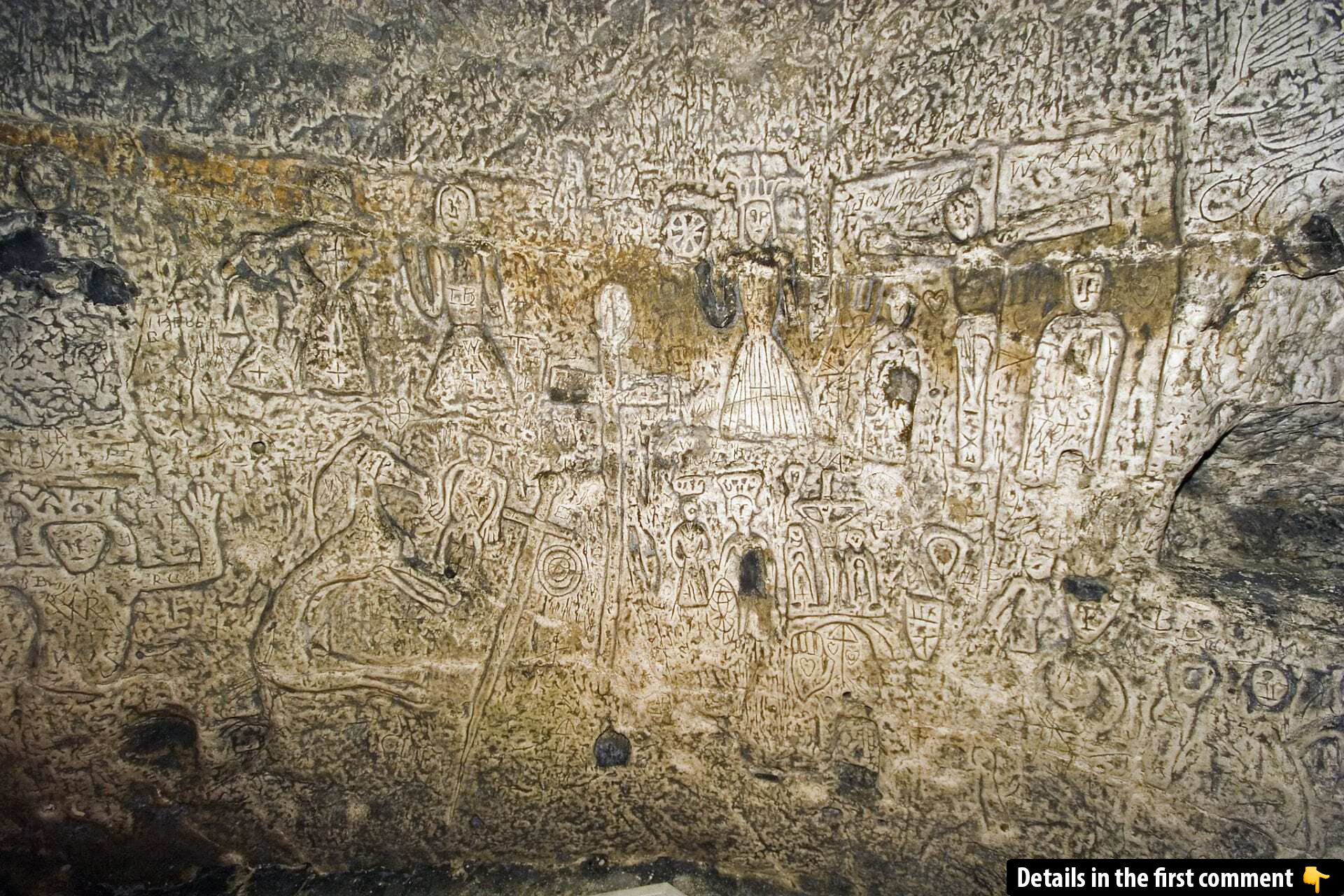Nestled beneath the streets of Royston, a quaint town in Hertfordshire, England, lies an underground enigma that has intrigued archaeologists and historians for centuries: Royston Cave. This artificial cave, hidden just beneath the bustling market town, has sparked countless theories and debates about its origin and purpose. The discovery of the cave in 1742 was nothing short of remarkable, and it has since become one of the most perplexing archaeological sites in Britain. From medieval carvings to mysterious legends, Royston Cave continues to captivate those who seek to uncover its secrets. But what truly lies beneath this historical site?
The Discovery of Royston Cave
In August 1742, while workmen were digging to establish the footing for a new bench in Royston’s market, they stumbled upon something unusual: a millstone buried beneath the earth. Upon further excavation, they unearthed a vertical shaft, leading down into an artificial cave.

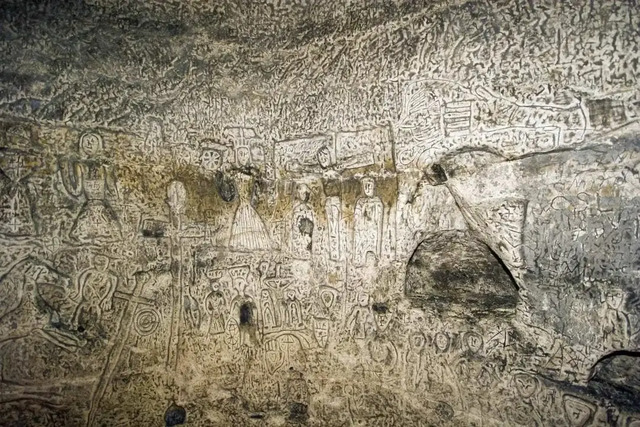
A young boy, bravely venturing into the shaft, discovered the cave nearly 30 feet underground. It was half-filled with debris, and early attempts to clear the space led to the uncovering of various artifacts, including a human skull, bones, and a piece of brass. However, the discarded debris meant that any significant archaeological material was lost, leaving researchers with limited resources to solve the cave’s mystery. Despite this, the discovery of intricate carvings on the cave’s walls marked the beginning of a journey into one of the most puzzling sites in archaeology.
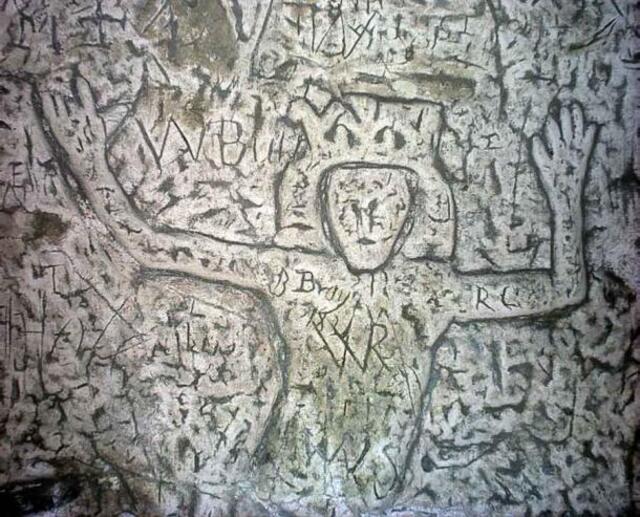
Video
Tune into this video from The Curse of Oak Island to explore the Knights Templar secrets hidden in a UK cave, as revealed in Season 10 of the series.
Architectural Structure and Carvings
Royston Cave is a testament to extraordinary craftsmanship. Carved into the chalk bedrock, the cave measures approximately 7.7 meters high and 5.2 meters in diameter. At the base of the cave, there is a raised octagonal step, which many believe was used for kneeling or prayer. The walls of the cave are adorned with an extensive array of carvings, primarily depicting religious figures and symbols.

Among the most striking images are depictions of St. Catherine, St. George, the Crucifixion, the Holy Family, and St. Laurence. Other figures, such as a line of 13 figures believed to represent Jesus and his disciples, add to the rich tapestry of imagery.
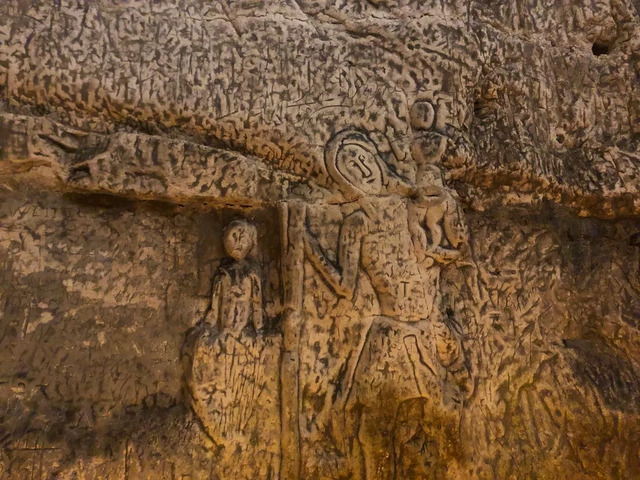
The carvings, which are believed to date back to the mid-1300s, suggest a connection to medieval religious iconography. Notably, these carvings were once thought to have been painted, but only faint traces of color remain today. Small holes beneath the carvings suggest that candles or lamps may have been used to illuminate the artwork, enhancing their dramatic effect. Some carvings even feature Pagan symbols, such as a large horse and the Earth Goddess Sheela Na Gig, whose meaning remains elusive but adds a layer of complexity to the cave’s symbolism.

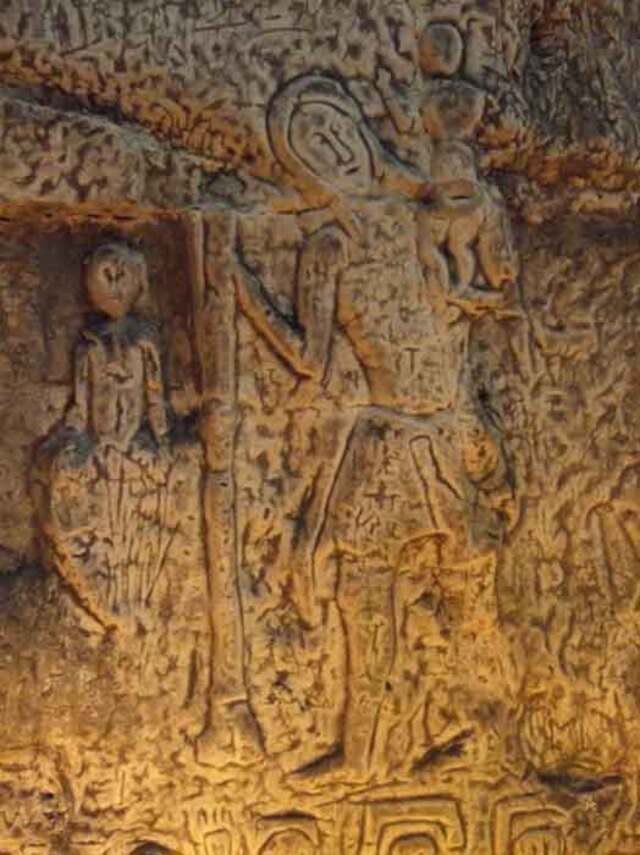
Theories Behind Royston Cave’s Origins
Royston Cave has given rise to a multitude of theories, many of which add to its mystique. The most popular and enduring hypothesis is that the cave was used by the Knights Templar, a medieval religious and military order known for its role in the Crusades. Historical evidence suggests that the Knights held a stronghold in nearby Baldock, and the presence of knights depicted in the carvings seems to lend credence to this theory. Some believe that the cave served as a secret meeting place for the Templars, providing a safe haven after the order’s persecution by Pope Clement V in 1312.
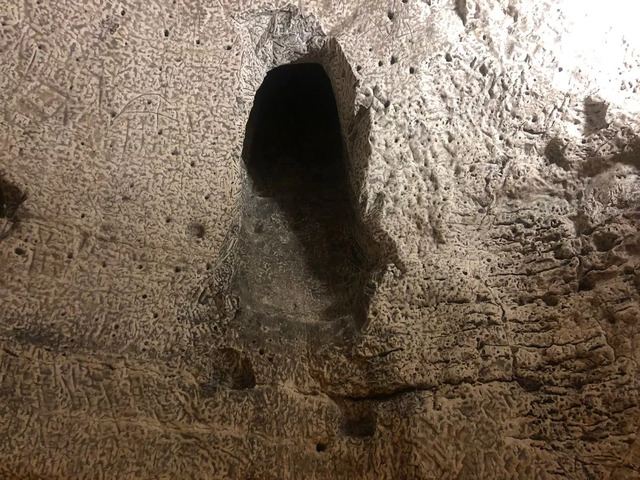
Another theory ties the cave to King James I, who was rumored to have an interest in Freemasonry. It is suggested that the cave could have been used as a private space for Masonic practices. Despite the limited evidence to support this theory, the connection to Freemasonry and the Templars continues to intrigue many.
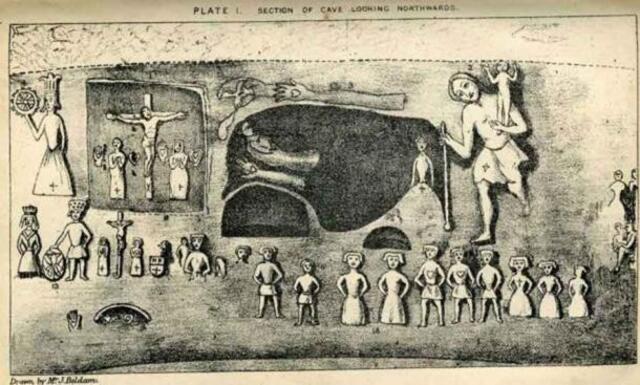
Less fantastical theories propose that the cave was used for more mundane purposes. Some believe that it was a storage space for the Augustinian monks of the local priory, while others speculate that it may have served as a Neolithic flint mine. However, given the lack of flint in the area suitable for tool-making, this theory remains less convincing.

The Role of Royston Cave in History
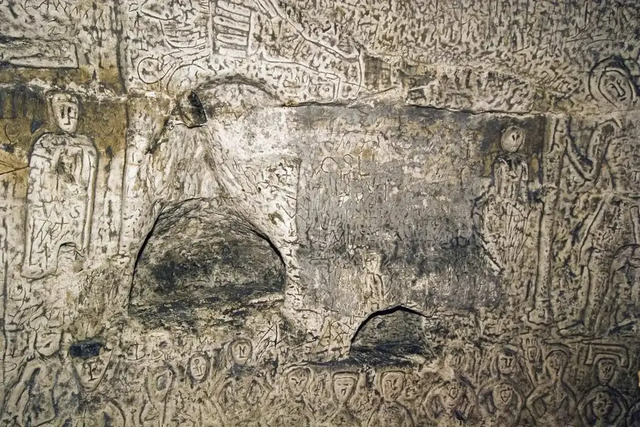
The location of Royston Cave at the crossroads of two ancient roads – Ermine Street and Icknield Way – adds another layer of historical significance. These roads were major trade and travel routes in antiquity, and their intersection in Royston would have made the cave a significant landmark. Some have suggested that the site may have had a ritualistic or spiritual role, possibly linked to ancient beliefs or practices tied to these ancient roads.
Theories regarding the cave’s role in medieval times are further complicated by the lack of historical records prior to its discovery in 1742. Nevertheless, the evidence of religious carvings and the presence of symbols tied to both Christianity and Paganism suggests that Royston Cave may have served as a multifunctional site, fulfilling spiritual, ritualistic, and possibly even clandestine purposes during its long history.
Conservation Efforts and Challenges
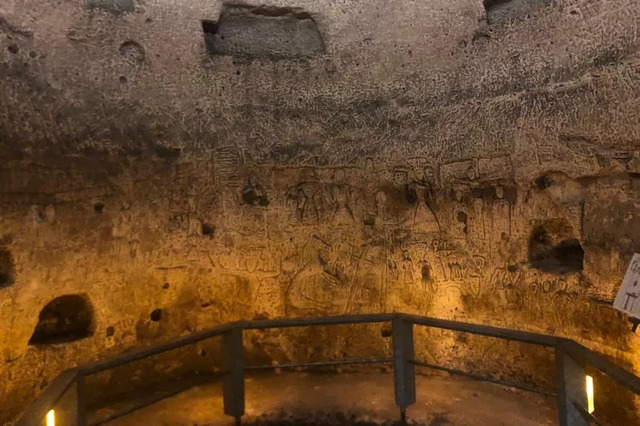
As a delicate archaeological site, Royston Cave has faced ongoing conservation challenges. The cave is carved into soft chalk, which is highly susceptible to damage from water, erosion, and microbial growth. Over the years, efforts have been made to prevent further deterioration, including the removal of certain earth layers to reduce the food supply for damaging insects. The preservation team has also worked to repair the cave’s infrastructure, addressing issues such as flooding and vibration from traffic above.
Despite these efforts, the cave remains vulnerable. The lack of similar examples of such sites makes it difficult for conservationists to determine the best approach for maintaining Royston Cave’s integrity. Still, the ongoing work offers hope that future generations will be able to experience and study this fascinating historical site.
Visiting Royston Cave
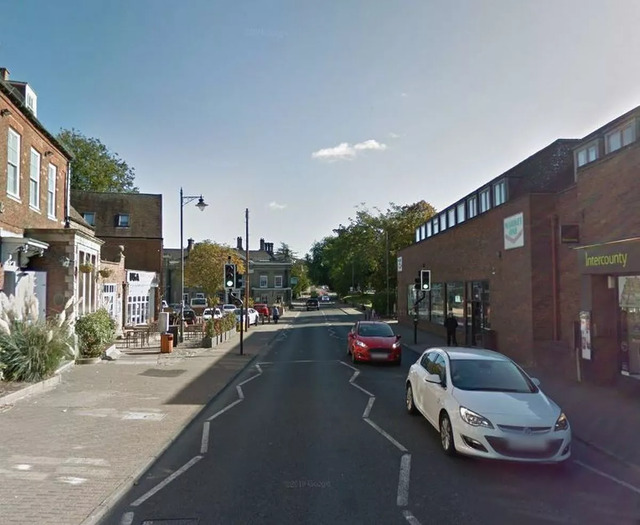
Royston Cave is not only a place for historians and archaeologists to explore but also an intriguing destination for visitors. Located just a short walk from Royston train station, the cave is open to the public on weekends from April to September. Tours are conducted by the Royston Town Council, with tickets available online. Each tour lasts approximately 30 minutes and is limited to 15 people, ensuring a more intimate and informative experience.
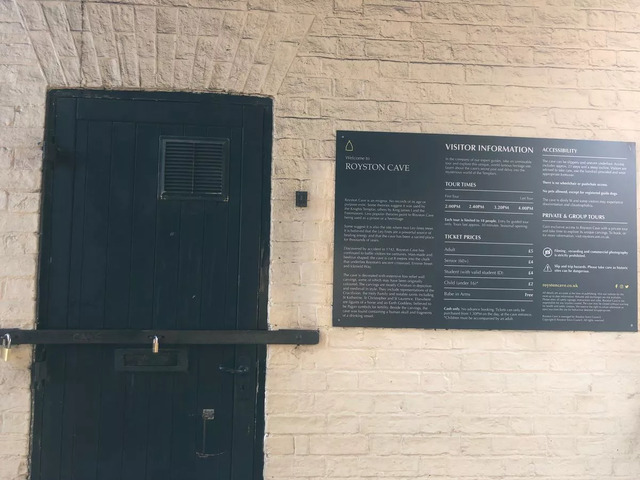
Visitors to the cave will be struck by the eerie atmosphere and the sheer scale of the underground chamber. As they descend into the cave, they are transported back in time, surrounded by the carvings and symbols that have mystified historians for centuries. The opportunity to view these ancient markings in person is a rare and unforgettable experience.

Video
Check out this video to uncover the mystery of ancient people who once lived inside a sealed cave, revealing fascinating archaeological findings.
Conclusion: Unsolved Mysteries and Future Research
Royston Cave remains one of the most intriguing and mysterious archaeological sites in England. Despite numerous theories and decades of study, its true origin and purpose remain elusive. Was it a secret meeting place for the Knights Templar, a Freemason lodge, or something else entirely? The mystery surrounding the cave continues to fuel speculation and debate, ensuring that it remains a subject of interest for archaeologists and history enthusiasts alike.
As new techniques in archaeology and conservation are developed, there may one day be answers to the questions that have baffled scholars for so long. Until then, Royston Cave stands as a testament to the enduring allure of historical enigmas and the timeless fascination with the past.
